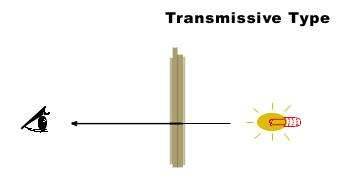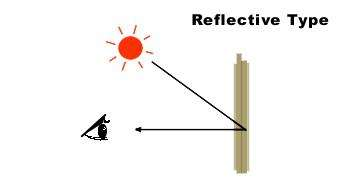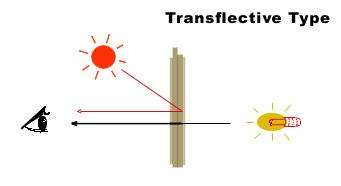LCD display mode
In terms of display mode, LCD has two types, positive LCD and negative LCD.


Positive image
The positive image on an LCD display is transparent when the pixel is "OFF". When the pixel is "ON", it is opaque. This mode of operation is mainly used in places with ambient light intensity. And it will help the contrast of the display, especially for displays that use reflective rear polarizers. For example, alphanumeric characters on a larger background. A segment or point on a character will absorb light (shown as a dark color), while the background will reflect light to enhance the character. Here are several typical "operation mode" and "view mode" combinations and the resulting images:
TN: Black character on grey background
Stn-green: Dark purple/black characters on a green background.
STN- Silver: dark blue/black characters with a silver background
FSTN: Black characters on a white/gray background
Negative image
When the negative image pixel on an LCD display is "OFF", it is opaque. When the pixel is "ON", it is transparent. In this mode, the part of the display that can reflect light and give character definitions is minimized. Therefore, this mode is usually used when there is a backlight and the ambient lighting conditions are dim. With a backlight, the transparent part of the display will "glow." When the pixel is turned on, the backlight can pass through the area, and the high ambient light will wash out the backlight. Here are several typical "operation mode" and "View mode" combinations and the resulting image (assuming backlit lights with specified colors are listed) :
TN: green-yellow characters that glow on a light gray background (yellow-green backlight)
STN (" blue negative ") : Glowing yellow-green characters on a light blue background (yellow-green backlight)
FSTN: Luminous white characters on a black background (white backlight)
LCD polarizer
Each LCD has 2 polarizers, front and back. They are fixed to the front of the display viewing surface and the back of the display to determine how to beam light into the LCD. The front polarizer is always transmissed-type and cannot be changed by the user, but the rear polarizer has three options.
Transmission type polarizer

The transmission-type rear polarizer is used in dark applications where backlighting is required and maximizes the brightness of the backlight. Most (but not all) transmission-type displays are negative, and we sometimes add color filters to certain areas of the display to highlight different signalers. Another example of a transmissible polaroid display is a transparent window in which you can see segments overlapping in your line of sight through the display window (like in a science fiction movie).
Reflective polarizer

A reflective display has a clear rear polarizer and includes a diffuse mirror. They are used in non-backlit applications due to insufficient backlight power or ambient light intensity. They are particularly suitable for use in battery-powered devices that can always provide an adequate level of external light.
Semi-transmitted type

A transreflective display has a rear polarizer that includes a translucent material. And it reflects part of the ambient light, and also transmits backlight. Therefore, when the backlight is turned on, the image can be viewed in high or low ambient light.